10 Inspiring Landscaping Ideas for the St. Croix River Valley
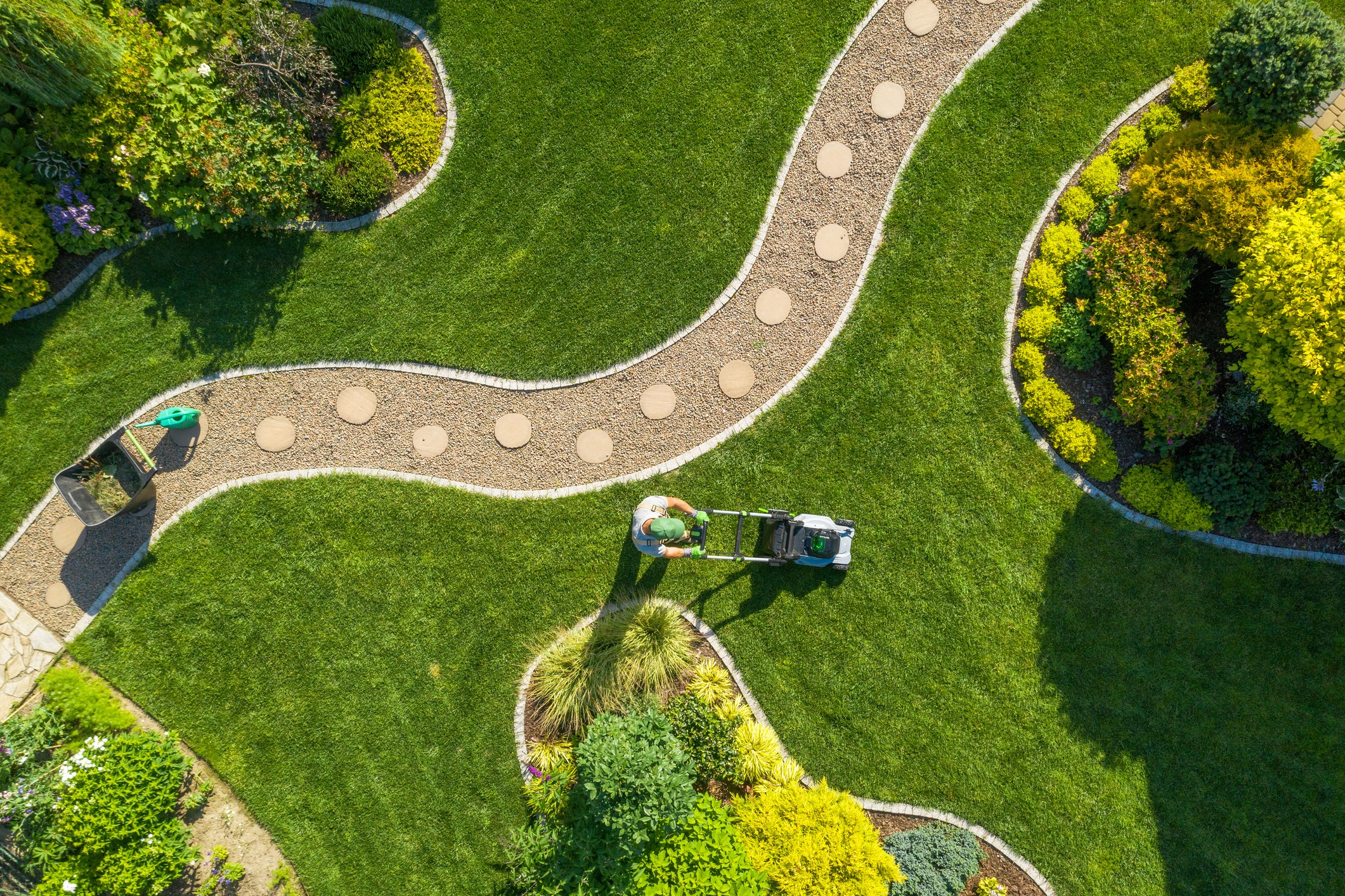
Many homeowners struggle to create an outdoor space that truly reflects their style and maximizes their property’s potential, especially with the turning of the seasons. Without thoughtful landscape design, you might be missing out on boosting your curb appeal, enjoying vibrant outdoor living, and even increasing your home’s value by a significant 10-12%. Imagine your neighbors admiring your stunning, cohesive landscape, or finally having that perfect outdoor oasis for entertaining or relaxation. You deserve a landscape that thrives in our Wisconsin weather and enhances your daily life, not one that feels like a constant battle against the elements or a missed opportunity.
That’s why we’ve compiled 10 inspiring Hudson, WI landscaping ideas designed specifically for our Zone 4/5 climate and local lifestyle. From curb appeal boosters to sustainable gardens, these solutions will help you transform your outdoor space into a beautiful, low-maintenance, and eco-friendly extension of your home. Let’s dig in and bring your dream landscape to life!
Enhancing Your Home’s First Impressions & Comfort
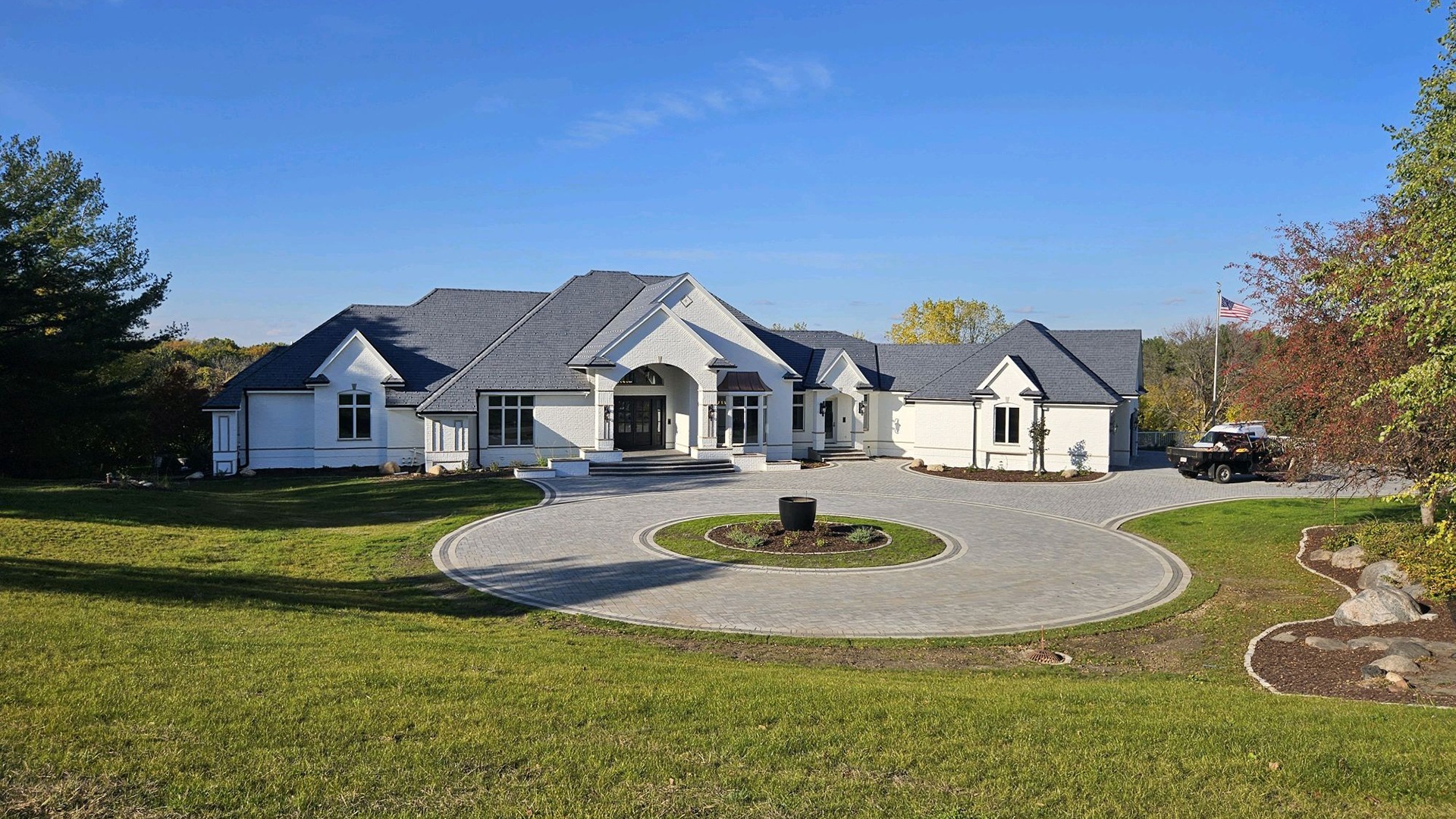
Idea 1: Boost Curb Appeal with Front Yard Landscaping
Your front yard is your home’s first impression, so let’s make it count. A welcoming, well-designed front yard not only charms visitors but can set your home apart in the neighborhood. Experts note that design sophistication in the front landscape dramatically increases perceived home value and curb appeal. To achieve this, start with layered plant beds along the front of your house. Place taller shrubs or ornamental trees at the back, medium perennials in the middle, and low groundcovers or flowers in front. This creates depth and year-round visual interest. Define your walkways with crisp edging or pavers leading to the entry – a clear, attractive path naturally draws the eye to your front door. Consider adding an entryway focal point as well, such as a pair of colorful planters by the door or a distinct specimen tree (like a dwarf Japanese maple or an ornamental crabapple) in the front yard.
To keep your Hudson front yard vibrant through the seasons, choose plants that thrive in Wisconsin’s climate and offer year-round appeal. Flowering perennials like daylilies, coneflowers, and black-eyed Susans will burst with summer color, while spring bulbs (tulips, daffodils) provide early cheer after our long winters. For autumn, incorporate a hardy statement tree such as a maple or serviceberry that delivers brilliant fall foliage. And don’t forget evergreens – spruce, pine, or arborvitae – which lend rich green color and structure even in snowy winters. Evergreen shrubs or conifers are an obvious choice to add winter interest for their color and form. You can also include a few ornamental grasses; their wispy seed heads add texture and look beautiful swaying above the snow. By mixing evergreens, deciduous plants, and seasonal flowers, your front landscape will have something to admire at any time of year.
For an extra pop of curb appeal, accent your front yard with simple hardscape elements. A little stone border or retaining wall around flower beds can tidy up the look and elevate your plantings. Low-voltage path lights along the walk (solar LEDs work great) not only guide guests safely at night but also create a warm glow visible from the street. Overall, a thoughtful front yard design with layered greenery, a defined entrance, and focal accents will instantly uplift your home’s appearance.
Idea 2: Create a Cozy Backyard Retreat
A fire feature, whether it’s a built-in fire pit or an elegant outdoor fireplace, instantly elevates your backyard into a cozy and inviting retreat. Beyond providing essential warmth on cooler evenings, it naturally becomes a social focal point, drawing guests together and fostering an atmosphere of relaxation and camaraderie. To truly design your ideal outdoor oasis, start by creating a comfortable and well-appointed seating area. A spacious patio, furnished with durable, weather-resistant furniture arranged to encourage conversation, is an excellent foundation. Incorporating convenient side tables ensures that drinks and snacks are always within easy reach.
To enhance the sense of seclusion and tranquility in your outdoor nook, consider various privacy solutions. A decorative fence can add architectural interest while offering a solid barrier, while living screens, such as strategically placed trellises with climbing plants, provide a softer, more natural approach. Even large, strategically placed potted plants can effectively define spaces and add a touch of lush greenery. Personalize your retreat with charming additions like a comfortable hammock for leisurely afternoons, unique garden art that reflects your style, ambient lanterns for evening illumination, or a small water feature that provides soothing sounds. To extend the usability of your outdoor space beyond the warmer months, invest in an outdoor heater, a directional heat lamp, or even a covered structure. With thoughtful design and the right amenities, your backyard can seamlessly transition from a seasonal outdoor area to your most cherished year-round hangout spot, perfect for quiet contemplation or lively gatherings.
Idea 3: Plan Spaces for Outdoor Entertaining
Transform your backyard into an entertainment hub! Start with a spacious patio or deck, ample for dining and lounge seating. Next, consider an outdoor kitchen or bar. This can be a simple grill station or a full kitchen setup with weather-hardy appliances. Even a basic grill cart can be enhanced with a pergola or prep table to create a defined cooking zone. An outdoor bar top is perfect for serving drinks and appetizers.
Don’t forget recreation spaces! A flat lawn is ideal for games like cornhole or bocce ball. For kids, dedicate a corner for a playset. A built-in seating wall around a fire pit offers extra seating for marshmallow roasts and storytelling.
When laying out these zones, prioritize flow. Ensure clear paths between cooking, dining, and activity areas. Use pergolas, paving changes, or landscape beds to delineate “rooms.” Privacy is also key; use fencing or hedges to create an intimate atmosphere. Good lighting, like string lights or torches, sets a festive mood for evening gatherings.
Finally, include practical details: convenient spots for food/drinks, storage for cushions, and a sound system. A well-planned entertaining layout makes your backyard the go-to spot for outdoor gatherings, as comfortable and convenient as indoor ones, but with the added joy of fresh air.
Low-Maintenance & Sustainable Garden Design in Hudson, WI
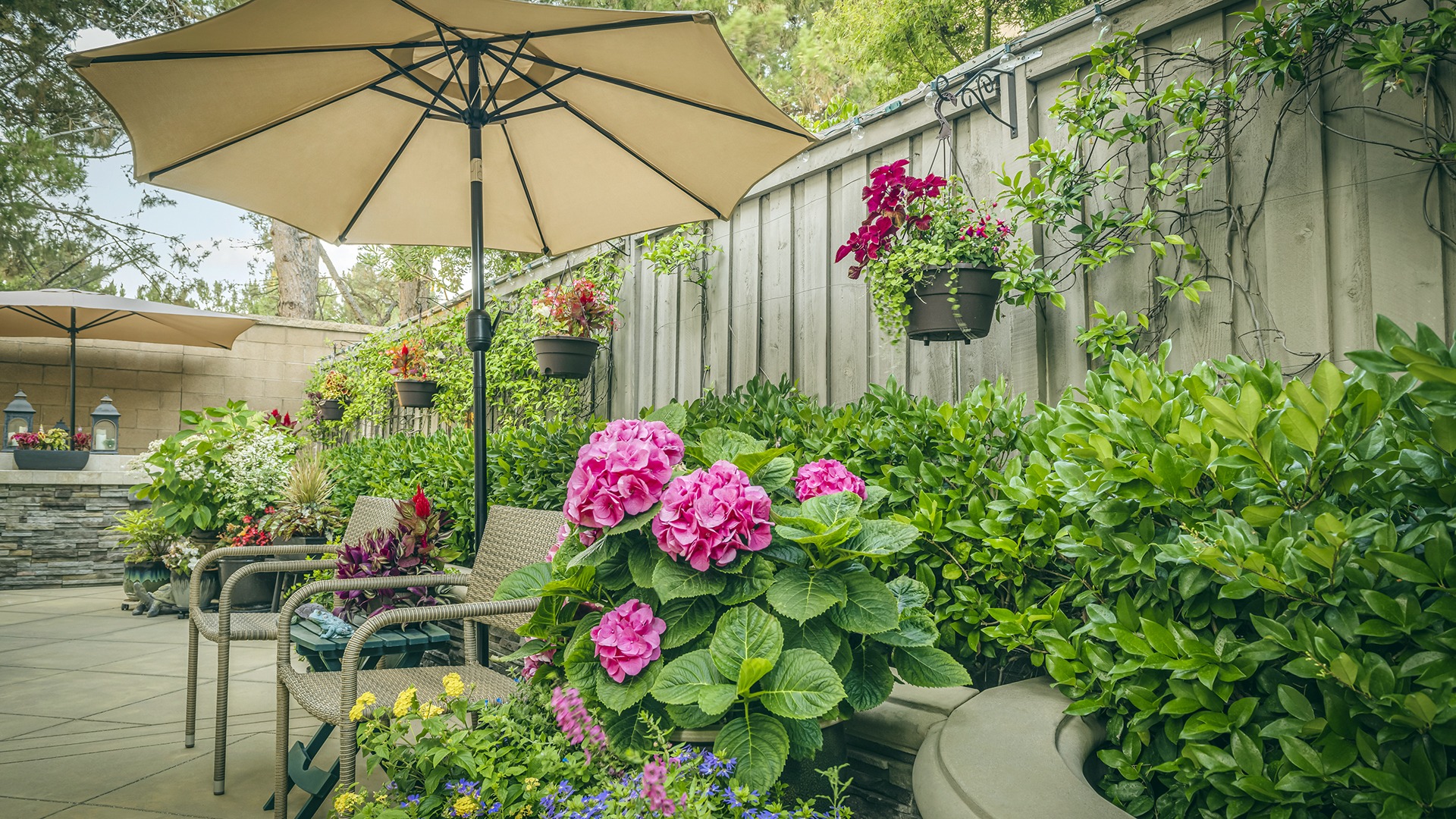
Idea 4: Embrace Low-Maintenance Landscaping
Wouldn’t it be nice to have a beautiful yard without spending every weekend on upkeep? Many busy homeowners in Hudson crave low-maintenance landscaping ideas. The good news is you can have a stunning landscape that practically takes care of itself by choosing the right plants and materials.
Start by selecting hardy perennials and shrubs that naturally thrive in Wisconsin so they don’t need coddling. Once established, tough plants like hostas, daylilies, sedum, and ornamental grasses can flourish with minimal watering or fuss. Native plants are often ideal low-care choices since they’re adapted to local conditions. Replace some high-maintenance annual flower beds or finicky exotic plants with these durable perennials to save effort year after year.
Another smart strategy is to reduce the amount of labor-intensive lawn space. Lawns can be time-consuming (mowing, fertilizing, etc.), so consider downsizing your turf areas and replacing them with groundcovers or mulched beds. Attractive groundcover plants (like creeping thyme, perennial geranium, or barrenwort) form mats of green that crowd out weeds and never need weekly mowing. Established groundcovers require relatively low maintenance, outcompete weeds, reduce soil erosion, provide habitat for pollinators, and enhance the landscape’s beauty. In other areas, use a thick layer of mulch or decorative stone in planting beds to suppress weeds and lock in soil moisture. Not only will you water less, but you’ll also spend far less time weeding.
When designing a low-care yard, also think about smart irrigation and equipment that can do the work for you. Drip irrigation or soaker hoses in garden beds deliver water right to plant roots, making watering more efficient and hands-off. You might install an automatic sprinkler system with a rain sensor – it will only water when needed and give your lawn attention even when you’re on vacation. Lastly, simplify any maintenance tasks with a thoughtful layout: keep plants with similar water needs grouped together, and use edging to keep grass from creeping into beds. By working with nature (choosing resilient plants and reducing lawn) and adding labor-saving tools, you’ll enjoy a lovely yard that doesn’t demand constant care.
Idea 5: Incorporate Native Wisconsin Plants
One of the best ways to achieve a low-maintenance, eco-friendly landscape is to fill it with native Wisconsin plants. Native flowers, shrubs, and trees are those that evolved in our region, meaning they’re perfectly adapted to Hudson’s climate and soil. When you landscape with native plants, you’re essentially working with plants that want to be here, so they tend to flourish with less effort, less water, and fewer chemicals. For example, prairie wildflowers like purple coneflower (Echinacea) and black-eyed Susan (Rudbeckia) are Wisconsin natives that offer bright, long-lasting blooms through summer and are tough as nails – heat, drought, even cold snaps don’t bother them much. Meanwhile, native shrubs such as serviceberry (Amelanchier) or red-twig dogwood (Cornus sericea) provide multi-season interest (spring flowers or berries, vibrant fall leaves, colorful winter bark) all while thriving in our local conditions.
Beyond their hardy nature, native plants bring big ecological benefits. By planting natives, you’re creating vital habitat for local wildlife right in your yard. Pollinators like bees, butterflies, and hummingbirds will flock to a garden filled with native blossoms – indeed, landscaping with natives promotes a healthy habitat for local birds, bees, and butterflies. (Think of monarch butterflies laying eggs on milkweed, or finches eating seeds from purple coneflowers.) Native plants are also typically free of serious pests and diseases here, so they don’t require chemical pesticides or heavy fertilizing. Because they’re adapted to the local rainfall patterns, many natives can get by with far less watering once established, saving you money on the water bill and conserving resources. All of this means a native garden is not only beautiful but also friendly to the environment and easier to maintain.
To design a native plant garden that still feels intentional and visually appealing, start by grouping plants as they’d appear in nature – clusters of the same species often have more impact than solitary specimens. You might create a naturalized prairie bed in a sunny corner with native wildflowers (blazing star, butterfly weed, black-eyed Susans, bee balm) mixed with ornamental native grasses (little bluestem or prairie dropseed) for movement. Or, design a pollinator-friendly border along your fence with native plantings like purple coneflowers, asters, and bee balm, providing a progression of blooms through the seasons. For shade areas, consider woodland natives such as ferns, wild geraniums, or Solomon’s seal to add texture under trees. The key is to choose plants suited to each spot’s light and soil (many resources exist to help identify true Wisconsin natives for sun, shade, wet, or dry areas). The result will be a landscape that feels “at home” in the St. Croix Valley ecosystem. Plus, you’ll enjoy knowing your garden is supporting local butterflies and birds while requiring less watering and care from you.
Idea 6: Adopt Sustainable, Eco-Friendly Practices
Rain gardens are excellent; these shallow, bowl-shaped beds with deep-rooted native plants (like swamp milkweed and joe-pye weed) capture stormwater runoff, reducing strain on storm sewers and preventing pollution while minimizing flooding and filtering pollutants. Beyond rain gardens, manage water sustainably using permeable pavers for patios and driveways. These allow rain to seep into the soil, reducing runoff and recharging groundwater. A rain barrel connected to your downspout harvests free rainwater for your garden, conserving potable water and aiding municipal storm systems.
Sustainable landscaping also means improving soil health and reducing waste. Compost grass clippings and leaves to create rich humus for natural fertilizer, reducing reliance on chemical alternatives. For lawn care, use organic or low-impact methods. Top-dress lawns with compost, overseed with clover, and tolerate some “weeds” to reduce chemical runoff and create a safer yard. Consider electric or manual tools and water lawns deeply but infrequently. These practices make your landscape eco-friendly and save you time, money, and effort long term.
Idea 7: Choose Durable Materials for Midwest Weather
Landscaping in the Midwest requires durable materials to withstand hot summers, cold winters, and the freeze-thaw cycle. For patios and walkways, opt for pavers or natural stone over large concrete slabs. Pavers flex with ground shifts and allow water drainage, reducing cracking. If damaged, a single paver can be replaced, unlike concrete. Choose tough materials like natural stone, brick, and high-quality concrete.
For decking, consider moisture and rot resistance. Cedar and redwood are naturally resistant, as is pressure-treated lumber (which needs sealing). For low maintenance, composite or PVC decking is ideal; they won’t splinter, rot, or need annual sealing, and handle temperature swings. While more expensive upfront, they offer decades of life. For metal elements, choose powder-coated or rust-proof metals like aluminum or stainless steel.
In garden beds, evaluate mulch longevity. Organic wood mulch decomposes annually, while rock mulch (river rock, crushed granite) is durable and won’t blow away. A mix can be effective: rock mulch in high-traffic areas and organic mulch for plants needing soil benefits. For edging, steel, aluminum, or stone/brick options are more durable than plastic in cold climates.
Retaining walls and raised beds should use materials that handle temperature changes. Segmental retaining wall blocks are engineered to allow movement, preventing cracking. Natural stone walls, especially dry-laid, also flex and drain well.
Quality installation is crucial. Proper base preparation and drainage for patios, deep footings for structures, and correct sloping for water flow are essential for longevity. Choosing durable materials and installing them correctly ensures a long-lasting landscape with fewer repairs.
Year-Round Beauty & Functionality
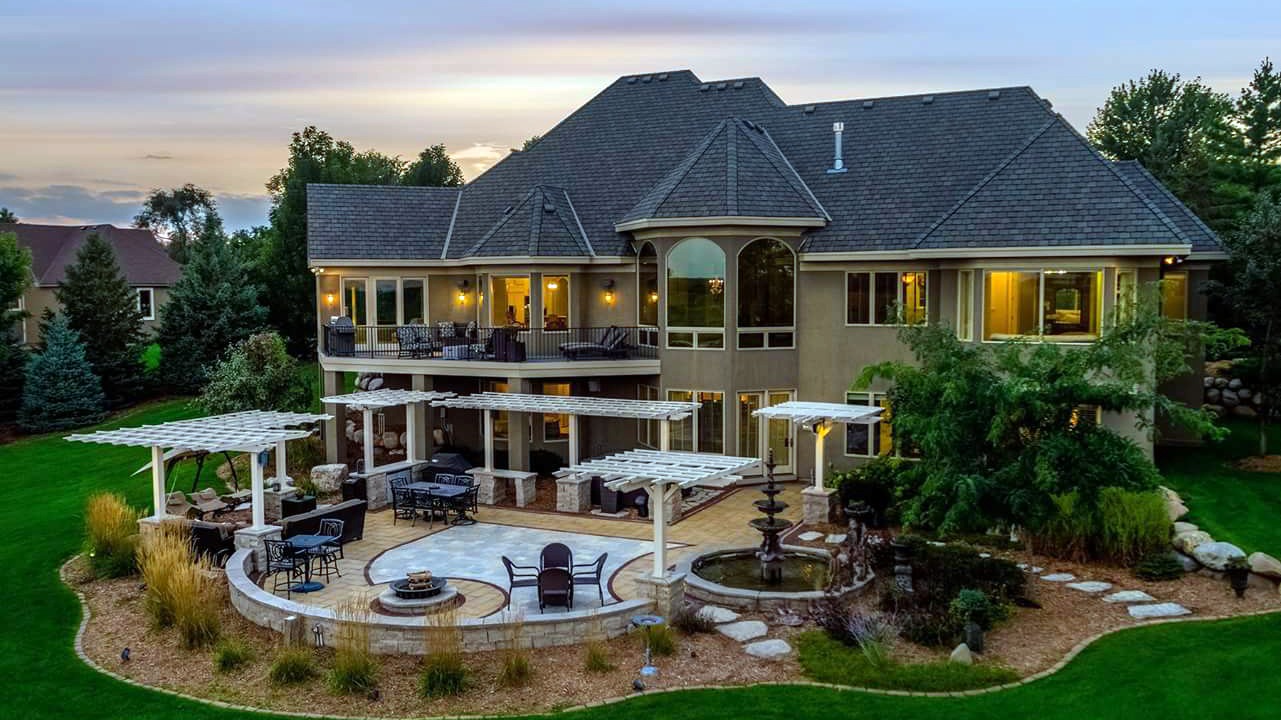
Idea 8: Design for All Seasons
A beautiful Hudson landscape offers beauty in every season. Designing for four-season interest means including plants and features that take turns stealing the show. Start with spring: include bulbs and flowering shrubs like lilacs or forsythia for immediate color and fragrance as soon as the snow melts.
For summer, a parade of perennials and annuals keeps color in your landscape. Classic Wisconsin perennials include coneflowers, black-eyed Susans, and daylilies. Combine them with ever-blooming annuals for continuous flowers.
For autumn, focus on fall foliage and late bloomers. Bring the gorgeous fall treescape into your yard with maples, birch, or oak, or smaller options like burning bush or sumac. Many ornamental grasses also peak in fall with beautiful plumes and warm colors. Late-blooming perennials like asters and sedums keep flowers going into October.
For winter, your yard can still be engaging. Most winter interest comes from structure – both hardscape elements and plants with strong form. Add an arched trellis or arbor, a birdbath, or outdoor artwork. Evergreen trees and shrubs are key, like a handsome spruce or arborvitae. Deciduous plants with interesting bark or berries also shine, such as red-twig dogwood or winterberry holly. Leaving some perennials and grasses standing through winter provides whimsical beauty and food/shelter for birds. Designing for all seasons means including spring bulbs, summer flowers, fall foliage, and winter evergreens/structure, resulting in a yard that never loses its appeal.
Idea 9: Add Shade with Pergolas or Pavilions
When considering a shaded outdoor structure, pergolas and pavilions offer distinct styles and benefits. A pergola is an open-roof structure with cross-beams or lattice, providing partial, dappled shade. Ideal for defining spaces like patios or garden walkways, pergolas are excellent for growing vines and stringing lights. They offer an airy, decorative feel, perfect for light shade and enjoying filtered sun.
In contrast, a pavilion has a fully covered, solid roof and open sides, providing full shade and rain shelter. Pavilions essentially create an outdoor room, suitable for outdoor dining or kitchens, offering protection from the elements and a sense of intimacy. They are larger, more substantial structures, often designed to match home architecture.
When choosing, consider your goals: a pergola for light shade and an open feel, or a pavilion for full protection and an extended living space. For Wisconsin’s climate, ensure structures are built to withstand snow load and wind. Pergolas need sturdy posts; pavilions require a strong roof. Integrate the structure into your landscape with plants or surrounding features.
Pergolas are popular for their affordability and versatility, appearing in over half of new landscape designs. Pavilions, though less common, are highly sought for expansive outdoor living. You can also combine concepts, like adding a retractable canopy to a pergola or string lights under a pavilion. The best choice depends on your yard and lifestyle.
Idea 10: Enhance Ambiance with Landscape Lighting
As daylight fades, thoughtful outdoor lighting extends the usable hours of your garden, adds safety, and creates a magical ambiance. It’s a top must-have outdoor feature, second only to fire pits. Well-placed lights can transform a dark yard into an enchanting evening retreat.
When planning, think in layers. Pathway lights illuminate walkways for safe navigation. Accent lighting highlights key landscape features like trees (uplighting creates dramatic shadows) or architectural elements of your home, giving it a stately look. Professional landscapes often use upward-facing lights for focal points like sculptures or water features.
For entertaining or relaxing, ambient lighting is key. String lights create a festive atmosphere on patios and decks. Hanging lanterns or LED candles add charm. Consider dimmable overhead lights for pergolas. Incorporate LED strips under stair treads, built into retaining walls, or underwater in ponds for subtle, practical glows.
Modern landscape lighting focuses on energy efficiency. LED options use less energy and last longer. Solar lights are available, but combining with wired lighting ensures reliability in all seasons. Smart timers or photocell sensors automate lighting. Well-lit yards deter intruders and add depth and ambiance, creating cozy and dynamic spaces. Don’t let sunset send you indoors—continue your outdoor fun in style with good lighting design.
Landscape Design Inspiration At Its Best
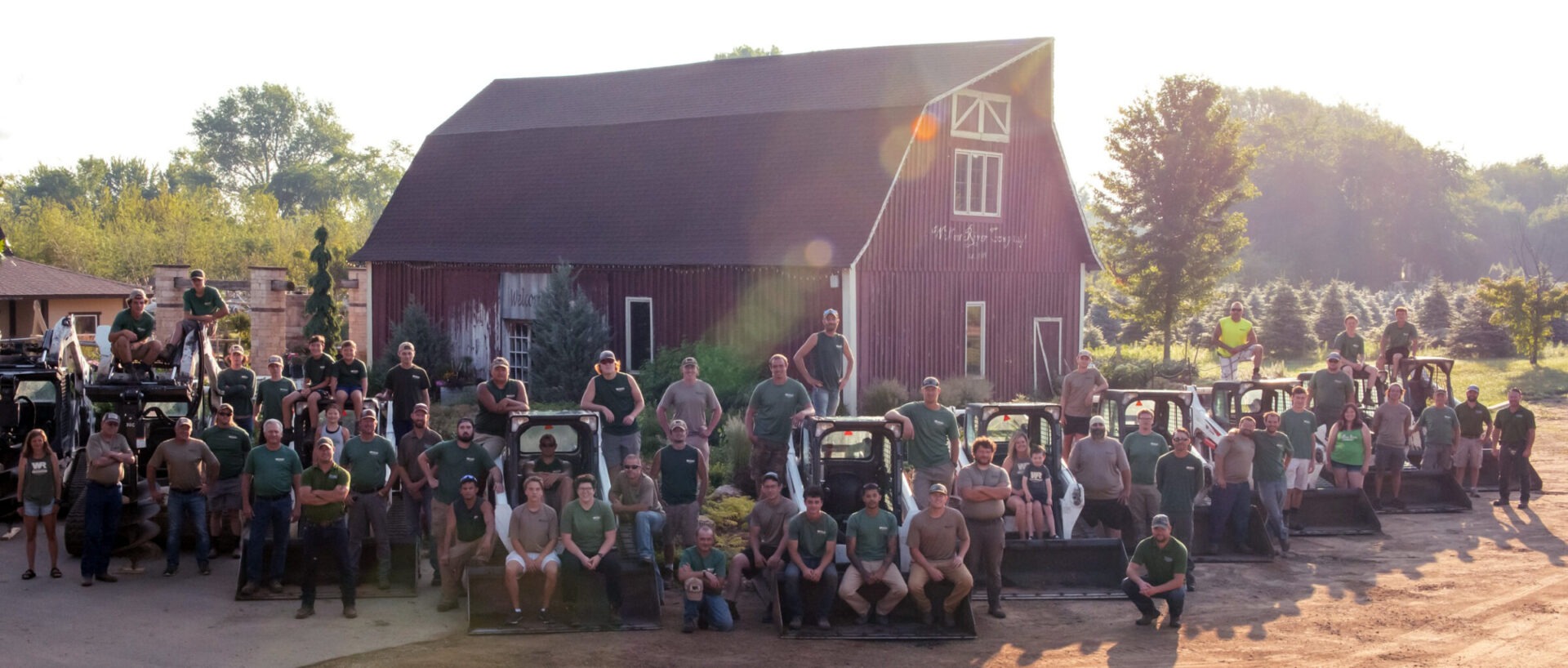
Designing your dream Hudson, WI landscape blends creativity with practical know-how. By mixing and matching inspiring ideas, you can create an outdoor space that reflects your style and withstands our local climate. Perhaps a native wildflower garden pairs with a flagstone patio and fire pit, or you’ll boost curb appeal with a front yard pergola draped in climbing roses. There’s no single formula; the beauty is in making it your own oasis.
Remember, planning is key. Consider seasons, maintenance, and daily use. Outdoor living in Hudson, Wisconsin, can be year-round enjoyable with a well-built landscape. Use these ideas as a starting point, whether it’s a rain garden for a soggy corner or string lights for patio ambiance. Willow River Company loves bringing these ideas to life.
Reach out for a consultation if you feel overwhelmed or want professional input. We’re your local Hudson experts in creating beautiful, functional, and durable outdoor spaces, from design to installation and maintenance. Here’s to transforming your yard into the landscape you’ve been dreaming of! With inspiration and the right plan, your Hudson home can have an outdoor environment as welcoming, enjoyable, and valuable as the inside. Happy landscaping!
Tags:
